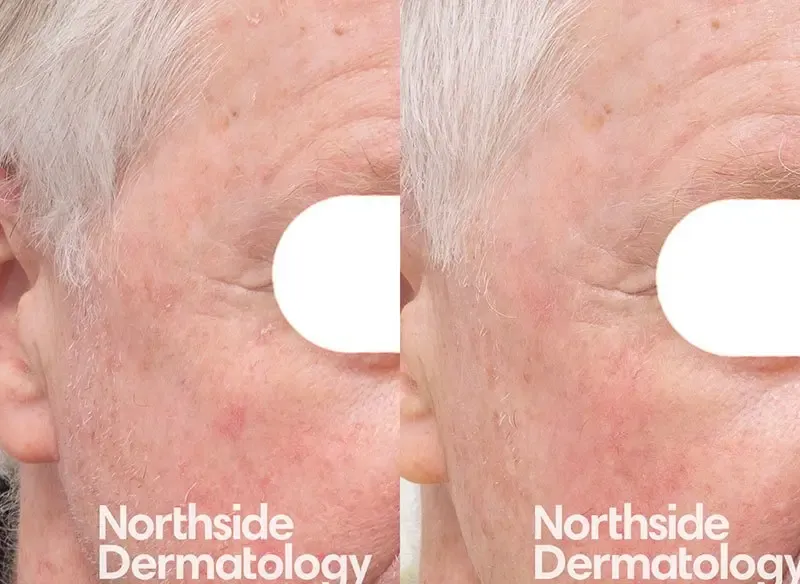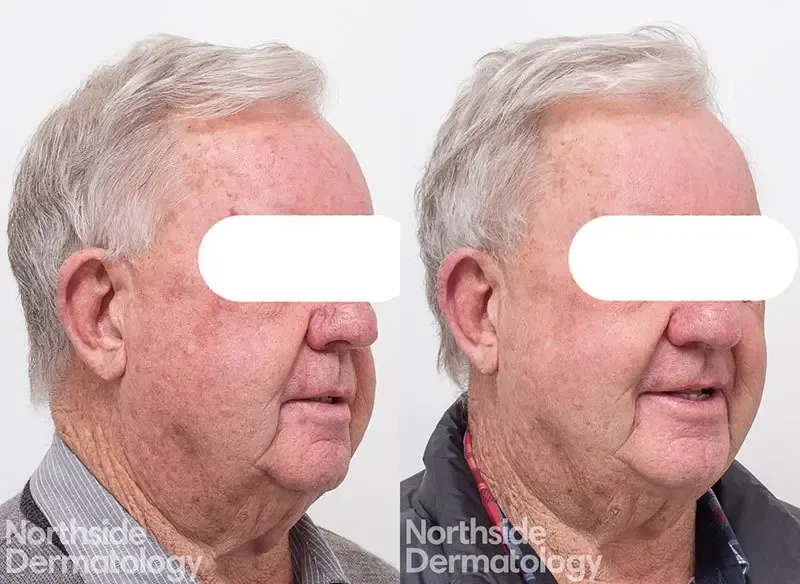
Comprehensive Skin Checks
Regular skin checks are essential for detecting skin cancer early, when it’s most treatable. The doctors who consult at Northside Dermatology provide access to full-body skin examinations using advanced tools and clinical expertise to assess moles, lesions, and any skin changes over time. Whether you have a personal or family history of skin cancer, fair skin, high sun exposure, or simply want peace of mind, regular skin checks are a proactive step in protecting your health.
Book a professional skin check today and take control of your skin health.
Dermatologist Skin Checks
Regular skin checks are an important part of maintaining skin health and detecting skin cancer at an early stage, when treatment options are more effective. Dermatologists who consult at Northside Dermatology perform thorough, full-body skin examinations using advanced diagnostic tools to assess moles, lesions, and skin changes over time.
A professional skin check may be recommended annually, particularly for individuals with fair skin, high sun exposure, or a personal or family history of skin cancer. Self-checking at home every three months is also encouraged, but it does not replace a medical assessment.
To arrange a skin check with a consulting dermatologist, contact Northside Dermatology.
Self-Skin Checks
Self-skin checks are a proactive way to monitor changes in your skin between professional appointments. While some skin cancers may grow slowly, others—such as melanoma—can develop rapidly. Regular self-checks can support earlier detection of concerning changes.
Dermatologists who consult at Northside Dermatology recommend establishing a consistent self-check routine and seeking medical advice if you notice any new or changing spots.
For more information on how to perform a self-skin check.
Understanding the Different Types of Skin Cancer
Skin cancer is the most common cancer in Australia, and early detection is key to effective treatment. There are several types of skin cancer, each with its own characteristics, risk factors and treatment options. The dermatologists consulting at Northside Dermatology have experience in identifying and managing all forms of skin cancer, from common to more complex types. This includes basal cell carcinoma (BCC), squamous cell carcinoma (SCC), and melanoma, as well as pre-cancerous changes like actinic keratoses (solar keratosis).
Understanding what to look for, and when to seek professional advice, is a crucial step in protecting your long-term skin health.
Basal Cell Carcinoma (BCC)
Basal cell carcinoma (BCC) is a slow-growing, non-melanoma skin cancer that usually develops in areas that are chronically exposed to the sun. BCC accounts for more than 75 percent of all skin cancers, making it the most common type of skin cancer in the world. BCCs rarely spread to other parts of the body and are almost always curable with appropriate treatment. However, they can be challenging to identify in the early stages and can damage the surrounding tissues if left untreated. Early diagnosis by a dermatologist is essential.
Squamous Cell Carcinoma (SCC)
Squamous cell carcinoma (SCC) is the second most common skin cancer, following basal cell carcinoma (BCC). This type of skin cancer emerges from the squamous cells of the epidermis in areas that are chronically exposed to the sun. While most SCCs are easily treated, they do have the potential to spread to the lymph nodes and other organs. Any concerning lesion should be examined by a dermatologist as soon as possible.
Melanoma
Melanoma is the most well-known and most serious type of skin cancer. Melanoma arises from changes in melanocytes, the skin cells that produce the pigment (melanin) which gives skin and moles their colour. Though it is less common than other types of skin cancer, it is also more aggressive. Most deaths from skin cancer are caused by melanoma. It is therefore essential to understand how to identify a lesion that could be a melanoma and seek a professional diagnosis from a dermatologist.
Actinic Keratosis (Solar Keratosis)
Solar keratosis or actinic keratosis is a scaly spot that develops on sun-damaged skin. It is considered precancerous and may evolve into squamous cell carcinoma (SCC).
Skin Cancer Treatments
Skin Cancer Treatments Tailored to Your Diagnosis
Surgical Treatments for Skin Cancers
Non Surgical Treatments
Photodynamic Therapy
Laser PDT
Before and After
Laser PDTFrequently asked questions
Skin cancer happens when skin cells grow in an abnormal, uncontrolled way. The most common types are basal cell carcinoma, squamous cell carcinoma, and melanoma. Most skin cancers are highly treatable when caught early.
Look out for new or changing spots, moles, or patches on your skin. Warning signs include growths that don’t heal, change in colour or shape, bleed easily, or feel unusual. A dermatologist is the one who can diagnose skin cancer with certainty.
Treatment depends on the type, size, and location of the cancer. Options include surgery, non-surgical therapies (such as creams or freezing), photodynamic therapy (PDT), laser PDT, and occasionally radiotherapy or medications.
Not always. While surgery is often the gold standard for removing skin cancers, many early or superficial lesions can be treated with non-surgical methods like PDT, topical creams, or laser treatments.
PDT is a non-invasive treatment where a special cream is applied and activated by a specific light source. This destroys precancerous and cancerous cells while leaving surrounding healthy skin mostly unaffected.
Laser PDT uses the same light-activated cream but adds laser technology for more precise targeting. It’s especially useful for stubborn lesions and sun-damaged skin, while also improving skin’s appearance.
Some treatments may cause temporary discomfort, such as stinging, redness, or peeling, but these usually settle within days to a couple of weeks. Your dermatologist will guide you on what to expect and how to care for your skin afterwards.
Downtime depends on the treatment. Surgical removal may take a week or two to heal, while non-surgical treatments like PDT typically involve a few days of redness and peeling. Most people can carry on with light daily activities.
Yes, there’s always a chance of recurrence, especially if you have a history of sun damage. Regular follow-up checks are important to monitor your skin and catch any new or recurring spots early.
Protect your skin daily by using sunscreen, wearing protective clothing, avoiding tanning beds, and seeking shade during peak sun hours. Regular skin checks, both at home and with a dermatologist, are also key to prevention.









